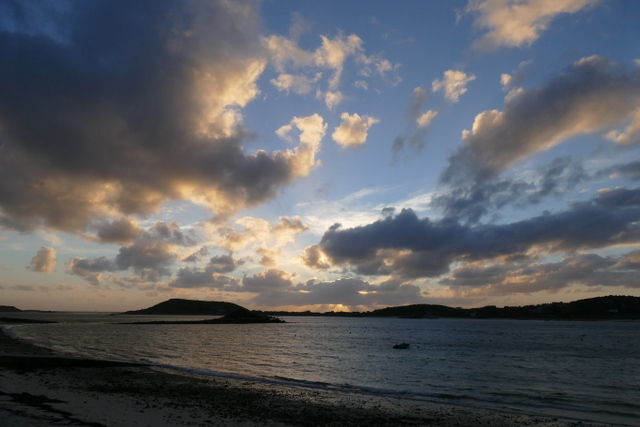The Isles of Scilly are a great place to spend time birding in October. We spent a week on Tresco, the second biggest of the islands.
Traditionally, Scilly was regarded as one of the best places in the UK to catch up with American vagrants. The highlight of our week was a juvenile Spotted Sandpiper which flew in calling and then spent just one evening feeding on the muddy edge of the Great Pool on Tresco.
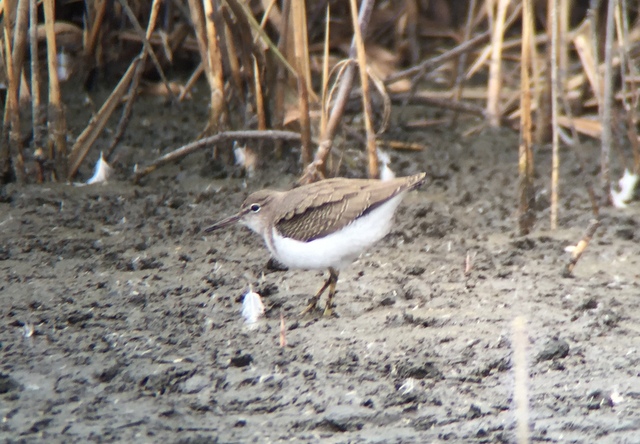
 Spotted Sandpiper – dropped in for an evening to Tresco Great Pool
Spotted Sandpiper – dropped in for an evening to Tresco Great Pool
The American equivalent of our Common Sandpiper, the juvenile Spotted Sandpiper is distinguished among other things by plainer tertials and greater coverts, a shorter tail and yellow legs. Only the adults in summer plumage have the distinctive spotted underparts. It is a regular vagrant to UK, with about 200 records here and a small number normally appearing annually.
A day trip across to St Mary’s, the largest of the islands, allowed us to catch up with a couple of lingering birds there. Blyth’s Pipit breeds around Mongolia and winters in southern Asia and is a very scarce vagrant to the UK. One had been hanging around in a couple of grassy fields here for over a week already the time we got a chance to see it.
 Blyth’s Pipit – a very occasional visitor from Asia
Blyth’s Pipit – a very occasional visitor from Asia
Having seen the Blyth’s Pipit, we walked round to the airfield where a Short-toed Lark was feeding on the short grass right next to the runway. These are much more regular visitors to the UK from southern Europe, and this individual had been here for nearly two weeks already. It was completely unphased by aircraft taking off right behind it!
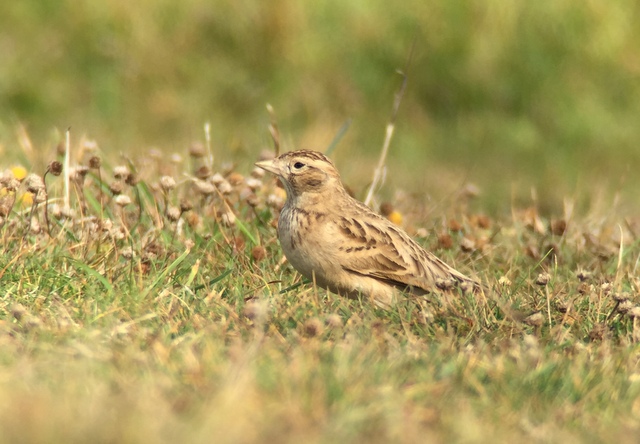 Short-toed Lark – feeding on the short grass on the airfield
Short-toed Lark – feeding on the short grass on the airfield
As well as rarities, Scilly is a great place to catch up with other migrants. There were at least four Yellow-browed Warblers around Tresco while we were there – it was hard to go for a walk around the island without running in to one or two of them, or at least hearing their distinctive calls.
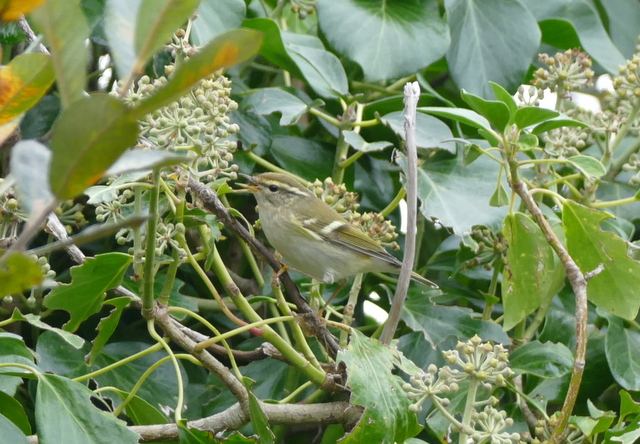 Yellow-browed Warbler – one of several on Tresco this week
Yellow-browed Warbler – one of several on Tresco this week
Commoner migrants also pass through the islands on their way further south. This Whinchat spent an evening feeding on the fence along Pool Road. It was still present briefly the following morning, and then seemed to continue on its way.
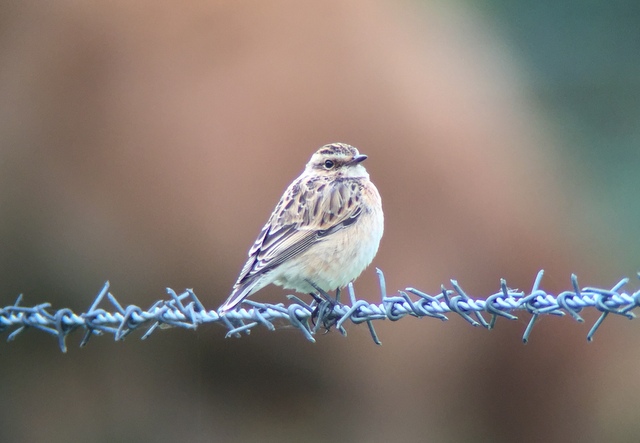 Whinchat – spent an evening feeding by the cattle field
Whinchat – spent an evening feeding by the cattle field
The Great Pool on Tresco has an enviable record for turning up rare wildfowl, as well as vagrant waders. Migrants including a single Pintail and a couple of Shoveler appeared amongst the Gadwall, Teal and Wigeon while we were there. A couple of Pink-footed Geese seemed slightly out of place. A single Garganey was present throughout our stay, and was the best the Great Pool could muster this year.
 Garganey – lingering on the Great Pool all week
Garganey – lingering on the Great Pool all week
Jack Snipe are also regular at this time of year around the Great Pool. They are largely crepuscular, best looked for early in the morning or at dusk. One was present for much of the week. They have a distinctive feeding action, bouncing up and down constantly. The Jack Snipe was joined by a single Common Snipe one evening, which took to bouncing up and down as well while it was together with it.
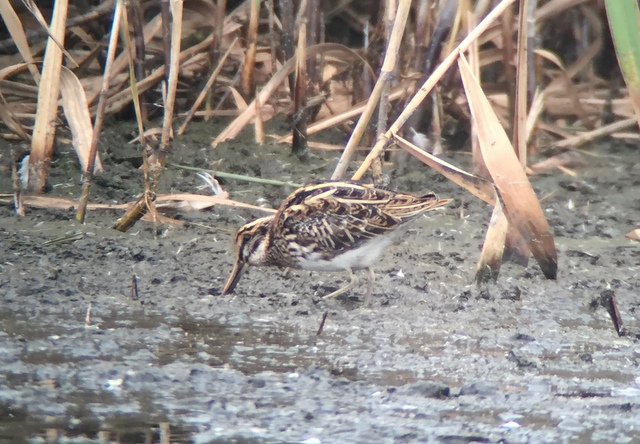 Jack Snipe – regular on the muddy margins around the Great Pool
Jack Snipe – regular on the muddy margins around the Great Pool
Tresco has traditionally held a small number of introduced Golden Pheasants. Sadly the population there, as with most of the rest of the UK, is no longer considered self-sustaining and is boosted by periodic additional releases. They are still great to watch, easiest seen at dusk along the road by the abbey.
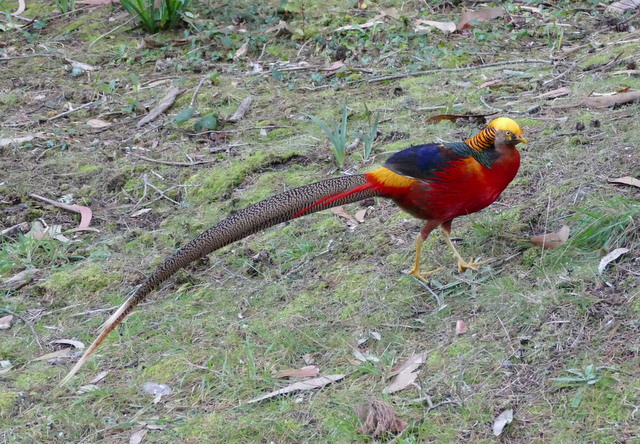 Golden Pheasant – a stunning male
Golden Pheasant – a stunning male
Non-avian interest is now provided by the introduced Red Squirrels. Although not native to the islands, Tresco has no Grey Squirrels, which have seemingly proven so harmful to the populations of Red Squirrels across so much of the UK. They can now be found in various places around the island.
 Red Squirrel – one of the recently introduced individuals on Tresco
Red Squirrel – one of the recently introduced individuals on Tresco
Above all, the islands are simply a lovely place to spend time walking, with the added advantage that you never know what might drop in while you are there. Well worth a visit.
